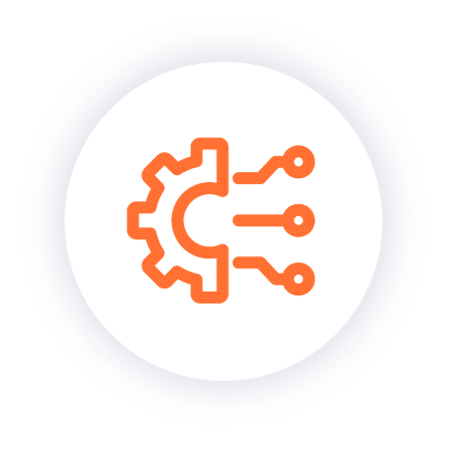Read the article on Spiceworks.
With employees no longer operating primarily within the perimeter of the corporate network, a multitude of unprecedented IT challenges result that can stall productivity, escalate cybersecurity risks, and invite business disruption. Amitabh Sinha, CEO & co-founder of Workspot, discusses how companies can support remote employees by improving IT management.
Enterprises across all industries are currently undergoing – and even accelerating – a digital transformation to accommodate evolving employee demands for flexible workstyles, and 76%of them agree that doing so is helping attract, recruit and retain top talent. However, more freedom for the end user can mean more IT hurdles.
Downtime is expensive. Organizations acknowledge that they cannot afford to have employees offline while IT teams try to troubleshoot complex issues that arise in their end-user computing (EUC) environment. In some industries, including financial services, even a few hours of downtime can cost an organization millions of dollars. Forward-thinking IT leaders are therefore leaving behind old-school, on-premises virtual desktop infrastructure (VDI) and physical PCs in favor of more reliable Cloud PCs.
In fact, the global desktop virtualization market is projected to rise from $2.27 billion in 2022 to a staggering $7.2 billion by 2029, and the on-premises share of the virtual desktop market is dwindling. With remote and hybrid work now mainstream, along with the scarcity of IT talent, enterprises need a Cloud PC solution that increases overall productivity for the business without anchoring IT in operational mayhem.
The Formula for Always-On Productivity
So how exactly do Cloud PCs mitigate IT troubleshooting and improve productivity across the business, and what should IT leaders look for when considering a Cloud PC solution? The short answer is that you need a cloud-native Cloud PC solution that features deep instrumentation across all platform layers. Cloud PC health data must be collected, analyzed and correlated in real-time to identify potential issues, whether a cloud vendor change, a developing security breach, a cloud region outage, or a connectivity or performance issue for an individual. Helping IT teams proactively identify and then address a situation before damage is done to workplace operations is a powerful capability that is only possible with a cloud-native solution.
Holistic visibility and continuous monitoring deliver critical cloud PC health insights
IT teams have no way of addressing issues they cannot visualize. Hence, Cloud PC availability and reliability depend on comprehensive observability across cloud resources globally. To achieve this, 24×7, real-time monitoring of Cloud PC behavior is essential. Millions of data points collected across public clouds, cloud regions, endpoints, virtual machine agents, protocol gateways, enterprise connectors and more lays the foundation for discovering patterns and trends that could indicate trouble.
Analysis and correlation of collected data in real-time produce valuable root cause and blast radius conclusions, giving IT insight into the full extent of a problem so it can be addressed appropriately before it impedes workforce operations. This degree of visibility cannot be achieved via a third-party bolt-on tool; rather, Cloud PC health monitoring must be inherent to the cloud-native platform.
IT leaders looking to take end-user computing to new levels of reliability and productivity should expect from their Cloud PC vendor comprehensive, global, and cross-cloud observability over Cloud PC behavior.
Mitigation and recovery measures for both outages and security issues
Once the root cause and blast radius of an issue have been determined, mitigation tactics for different scenarios must be ready to avoid business disruption. For example, if an outage occurs in a cloud region, IT teams must be able to quickly failover their Cloud PCs to another region or another cloud.
Another tactic is to ensure that a subset of highly valuable end-users are always able to connect under any circumstance. In this instance, whether it is a cloud outage or employee travel causing connectivity troubles, a preassigned “never-fail” Cloud PC can be automatically and transparently launched in the best cloud region for that end user. In the case of a natural disaster preventing employees from reaching the office, standby Cloud PCs can be activated by IT with just a single click, enabling the end-user to get back to productivity once they are in a safe location.
A worst-case scenario is that your company is the victim of a ransomware attack. Despite billions of dollars being spent on prevention, most experts agree that it’s only a matter of “if,” not “when” you’ll suffer an attack. Should a ransomware attack occur even with prevention measures in place, on average, you’re facing about 30 days of downtime for remediation.
The cost of lost productivity during this time can be catastrophic for an organization. Instead, now IT teams can turn to a pool of Cloud PCs that are completely isolated from the company’s compromised network. Employees simply log in to their “clean” Cloud PC from any non-compromised device, and they can get back to work within an hour of an attack.
Business continuity of this caliber is critical for companies aiming to maintain a competitive edge and avoid the financial and reputational losses associated with extended downtime.
What to Prioritize for Your Cloud PC Evaluation?
When selecting an end-user computing solution that optimizes employee productivity, consider the increasing complexity of monitoring EUC environments as multi-cloud strategies become more necessary. There are many good reasons to select a Cloud PC solution that allows deployment across multiple clouds: business continuity strategies, cost optimization, and access to best-in-class features are among them. But not all Cloud PCs are created the same, so it is critical to assess the solution’s underlying architecture to ensure your requirements in these areas and more can be met.
Multi-cloud implementation makes meaningful visibility into Cloud PC behavior more difficult, and it’s doubtful that your in-house IT team can build a big data monitoring, analysis and correlation engine that is sophisticated enough to accomplish what is needed – so you should expect Cloud PC vendors to provide it. Another area to prioritize during your evaluation is cost-optimization capabilities – across public clouds.
Each cloud has different characteristics and costs. Licensing, price-performance and compute power vary across clouds and among cloud regions. Make sure you’re able to deploy Cloud PCs in the best cloud for each use case and take advantage of the TCO management techniques offered by your Cloud PC vendor.
Comprehensive Cloud PC Health Analysis: The Key to Maintaining a Competitive Edge
As the adoption of remote and hybrid work models increases, so does the importance of having a modern end-user computing solution in place that drives greater productivity across the business while simplifying IT maintenance and troubleshooting processes. The right Cloud PC solution delivers outstanding performance to end users, fewer headaches for IT teams, and greater agility and security to accommodate a dynamic business environment marred by a significant threat landscape.
The key to your EUC success formula is having deep and broad Cloud PC observability and sophisticated data analysis to gain actionable insights into Cloud PC health so the right measures can be taken quickly to avoid lost productivity, minimize IT troubleshooting and maximize everyone’s valuable contributions to business strategy.



